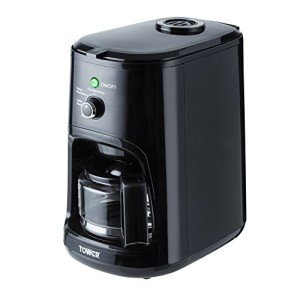Fixing a Drip Coffee Maker
It's time for you to fix the leak if water is leaks from the safety valve of your drip coffee machine. The good thing is that it's most likely fixable.
We will also discuss how to maintain a coffee maker and learn various ways to make fantastic coffee using a drip coffee machine.
1. Carafe Leaks
Drip coffee is brewed by pouring hot water on ground coffee beans, permitting the coffee to soak through while being collected in vessels like a carafe or a pot. The coffee can be brewed with various methods and equipment. Pour-over, French drip and automatic drip are some of the most commonly used methods.
A drip coffee maker is a fantastic way to get your morning fix without waiting in a line at a cafe or wait for your coffee to brew. drip pot coffee maker Coffeee of these machines can be a problem if they fail. One of the most common issues is that the coffee pot will drip when you pour. This can be a hassle and cause your coffee to be messy, but it could also cause burns to your hands or other surfaces.
It's the location of the coffee pot that can cause it to leak when you pour. Typically, the spout is on the back of the carafe, near the reservoir of water. This is due to the fact that there isn't enough space in the front of the container to create a deep, easy-to-pour spout.
When it comes to liquids they flow when there is less pressure. Some older drip coffee makers will drip if you try to pour.
There is an easy solution to this problem though. You can solve this issue by moving the spout to the front of the carafe. This could solve your dribbling issue and also save you from having to clean your counters each morning.
The amount of coffee that you pour in the carafe might be the cause of the dribbling. It is recommended to make use of two tablespoons of espresso for every six ounces of water. However, the density of your ground can change, so you might have to adjust the ratio. A kitchen scale is a useful tool for this, as it will help you keep the track of the ratios of your water and coffee and help you avoid over- or under-extraction.
2. Spout Leaks
If you've ever considered different budget drip coffee makers, you'll notice that they come in a variety of shapes and sizes. Some have thermal carafes and others do not. Some pour the water through rings with a tight spout while others use wider ones.
One thing that influences the way all of these machines dispense water is the valve in the hose's end. The valve can get blocked by gunk and cause leaks in the spout. It's not difficult to fix. Unplug the pot and drain the water into the sink. Take the valve off and clean it.
3. Safety Valve Leaks
Bialetti pots are said to work perfectly, whether you're lying in bed or running towards the kitchen to turn the switch. If you don't hear a noise or rumbling perhaps it's an opportunity to take a look.
There's a hole in the bottom of the bucket and an extension tube that connects to it. During the boiling process, this tube carries the boiling water to the coffee pot's drip area. This tube has a one-way flow valve that allows cold water to return into the bucket, but forces the bubbles from boiling water to rise up the coffee pot.
If you find that your coffee maker releases steam or pressure through the safety valve frequently, it's possible that the valve is blocked and requires to be repaired or replaced. To fix this issue, put a bucket beneath the safety valve pipe and press upwards on the lever and let it snap back several times (use gloves since the water could be hot). If this does not work, it could be the right time to consult a professional. This is a long-term job, as the valve must be removed and dismantled.
4. Filter Leaks

The reservoir and filter form the heart of any drip coffee maker. The reservoir and filter are at the center of any drip coffee maker. During the brewing cycle it is crucial to follow proper water usage guidelines as well as maintenance and cleaning routines. This will ensure that your coffee maker will continue to function at its peak.
When you turn on the coffee pot the reservoir of water will be heated by a resistive heating element. The heat will rise through a tube of white that lies below the reservoir base. The hot water then flows over the coffee and begins to absorb flavors from the grounds. As the hot water is poured over the grounds, the coffee oils released during roasting are taken up. These oils give coffee its distinctive flavor and aroma.
Coffee grounds that are left wet for too long could lead to mold growth. To avoid this, store the grounds in a way that allows them to dry more quickly (e.g. hanging them, separate from the coffee maker propped up for air flow or. ).
If the coffee grounds used aren't coarse enough or are not the right size for your drip coffee machine they could block the water flow or result in an overflow. It is recommended to use one filter made of paper or reusable that is the correct size for your drip coffee maker. In addition, it is recommended to experiment with brew times to determine which setting yields the best taste for your tastes.
Regular cleaning and decaling are important for optimum performance. Follow the manufacturer's guidelines for the correct cleaning and descaling methods to eliminate the buildup of minerals from your machine. Use filtering or bottled drinking water instead of tap to improve the flavor of your coffee.
